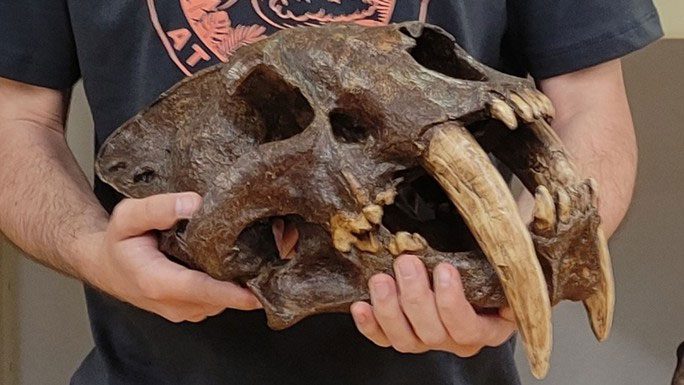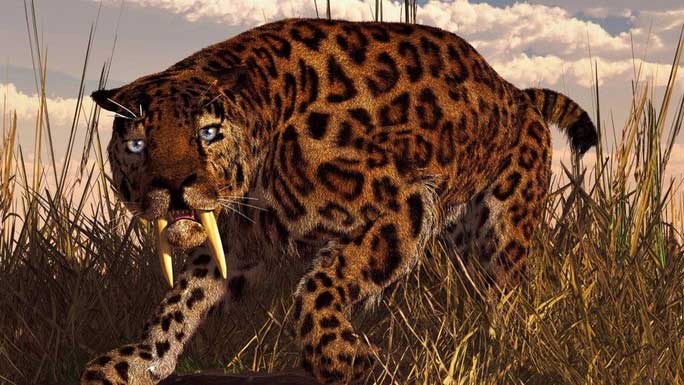Two previously unknown ancient cat species have been identified in South Africa, featuring skulls as large as those of modern tigers or lions, along with a set of extremely fearsome “monster” fangs.
According to Live Science, these cat species roamed Africa as far back as 5.2 million years ago and belong to the “saber-toothed cat” group.
This discovery is believed to change what scientists know about this extinct family of felines and sheds light on the environmental changes that occurred during that time, indirectly revealing why human ancestors began walking on two legs.

Massive skull of the saber-toothed cat – (Image: iScience).
Fossil remains of four extinct cat species were discovered in a paleontological “treasure trove” near the town of Langebaanweg on the West Coast of South Africa.
These include two known ancient species, Adeilosmilus kabir and Yoshi obscura, along with two newly named species, Dinofelis werdelini and Lokotunjailurus chimsamyae.
All four species belong to the subfamily Machairodontinae, a group of extinct carnivorous cats. The name Machairodontinae means “dagger-toothed”, which is a completely accurate description of their “appearance”.

Graphic reconstruction of the saber-toothed cat, resembling a large leopard with even more terrifying teeth – (Image: Shutterstock)
True to its name, the remains of these monstrous cats include massive skulls with strong teeth, the most fearsome being a pair of long, sharp fangs, much like those of the saber-toothed tigers often depicted in films.
In a publication on July 20 in the journal iScience, scientists noted that the discovery of Dinofelis werdelini was not surprising since closely related species had previously been identified in Europe, North America, and China.
However, Lokotunjailurus chimsamyae is shocking due to its distinctive characteristics, closely resembling only a few species of the same genus found in Kenya and Chad.
These findings also indicate that saber-toothed cats may have had a much broader range than previously thought, occupying very different ecological niches to coexist in the area at the same time.
Lokotunjailurus chimsamyae and Adeilosmilus kabir could run extremely fast, dominating the grasslands, while the other two species were smaller and more agile, suited for forested areas.
It is possible that the climate change transforming Africa during that period from a massive forest to open grasslands led this group of monstrous cats to evolve diversely, potentially giving rise to many other species as well.
This environmental change, combined with adaptations in a world filled with such diverse monsters, could be a significant driving factor in human evolution.
Five million years ago marks the point when hominins began walking on two legs. Over millions of years of evolution, around 2 million years ago, the first species to stand fully upright, known as Homo erectus, or “Upright Man”, emerged.





















































